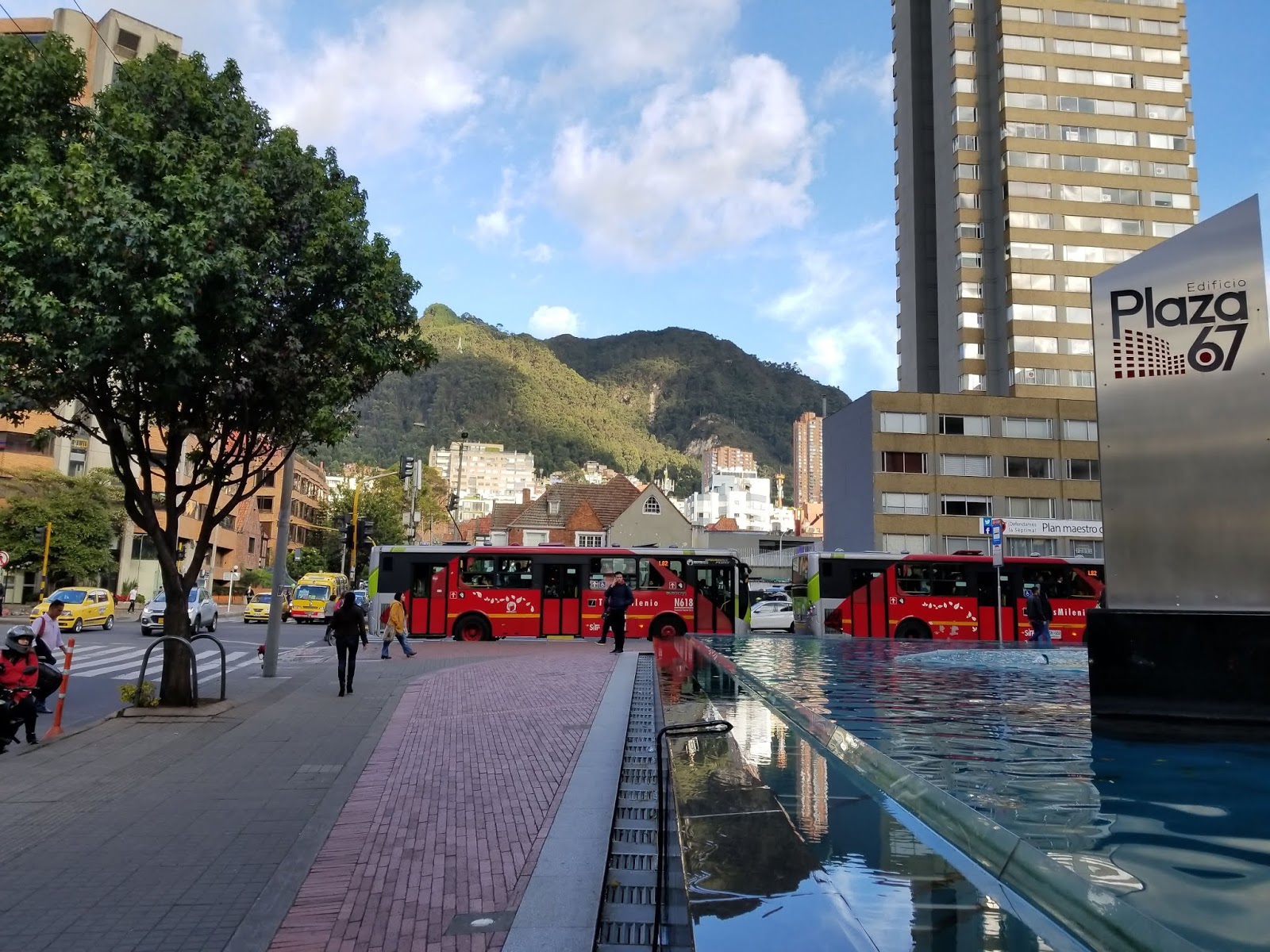Bogotá
Day 46 (August 13, 2018) – Bogotá, Colombia
Bogotá is the reason why we continue to
travel to new places. Every once in a while, we come across a place that
completely surprises us. Bogotá is a city that I admit to not giving much prior thought. I knew it was the capital of Colombia and that most flights
into the country will land you there.
Shortly after exiting the airport ourselves, we were in a taxi heading downtown to our accommodation and Travis says, “I feel like we’re in Chicago in the fall,” which is a spot-on description of our first impressions of Bogotá. It’s a massive, modern city with wide streets, tall buildings, extensive museums, fancy restaurants, and a serious nightlife scene that we just couldn’t keep up with. It just leaves me thinking, “why did such an amazing city never show up on my radar before?”
Shortly after exiting the airport ourselves, we were in a taxi heading downtown to our accommodation and Travis says, “I feel like we’re in Chicago in the fall,” which is a spot-on description of our first impressions of Bogotá. It’s a massive, modern city with wide streets, tall buildings, extensive museums, fancy restaurants, and a serious nightlife scene that we just couldn’t keep up with. It just leaves me thinking, “why did such an amazing city never show up on my radar before?”
 |
| The Colombian flag flying in front of the Casa de Nariño, where the president lives and works. |
The big city vibe of Bogotá can make it feel like you’re not too far from home, but there were plenty of cues that told us that wasn’t the case. For starters, English is rarely spoken. I’m glad we brushed up on our Spanish because we’ve been using it, or at least trying to. And as far as we could tell, there weren’t many English-speaking tourists either.
Bogotá also greeted us with some mild, but annoying
symptoms of altitude sickness. This was mostly just headaches, shortness of
breath, and restless sleep, but they passed after a couple days. At 8,660 feet Bogotá is at an elevation higher than Vail, Colorado. This also makes for some
surprisingly cold weather. Despite being only 320 miles from the equator, the
air is thin and during our stay the daytime temperatures were in the 60s with the nights in the low 40s. It really does feel like fall in Chicago.
 |
| Plaza Bolívar, in the center of Bogotá's historical area. |
Unfortunately, we did seem to get a lot of warnings from people
to pay attention to your surroundings and your valuables, especially at night.
Perhaps the same is true for anyone who visits a major US city, but the
warnings are hard to ignore and did affect how and when we chose to visit places.
 |
| The street we walked up to get to our apartment in the Chapinero neighborhood. |
What shocked us most about Bogotá was that after a few days of living
in our 2-bedroom apartment in the Chapinero neighborhood, we both agreed that
we could easily live there. There is something very familiar about Bogotá as you
walk around the neighborhoods, visit the museums, ride the Transmilenio (their public
transportation system), and find great restaurants and coffee shops around
every corner. It feels oddly familiar to the big cities at home like Chicago
and New York. But at the same time, you feel like you’re a world away. The
difference in language and culture is so apparent throughout the city. All bus
drivers wear ties, empanadas and arepas can be bought on every street corner,
and people gladly give their spare change to people in need (this seems so unheard of at home, you have so see it here to believe it). It was also kind of fun to struggle with the language, experience
Colombian culture, and feel like you’re the only American tourist in the city.
 |
| Our most frequented coffee spot, Tostao', where a large cappuccino sets you back about 90 cents. |


Comments
Post a Comment